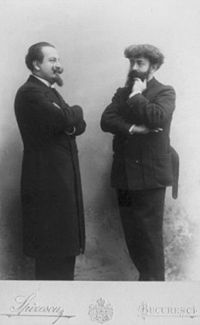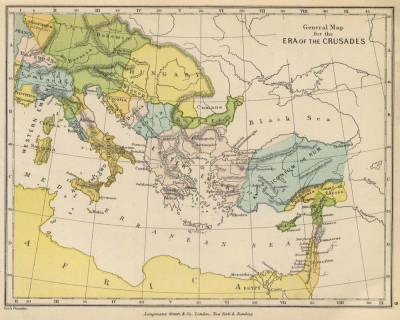EARLY HISTORY
FOUNDED in the aftermath of the first Crusade in 1096, the Order of the Knights Templar quickly developed into one of the most powerful and influential Military Orders of all time.
Between the years 1118 and 1120 two veterans Knights of the first crusade, Hugues de Payns and Godfroi de Saint-Omer, proposed the creation of a monastic Order to protect Christians from Europe on their long pilgrimages to the newly captured Holy city of Jerusalem. Even though Jerusalem was secure under Christian control, other areas of the Outremer were not and frequently pilgrims and travellers would be slaughtered by the marauding bands. King Baldwin II, King of Jerusalem, agreed to their request and allocated them space for headquarters in the confines of his own palace close by the Al Aqsa Mosque, believed to have been built upon the ruins of the original Temple of Solomon and from which they afterwards took their designation. Their vows were typical of those contained within the Rule of many religious bodies of the time and were of poverty, chastity and obedience under the Rule of Augustinus and to which they uniquely added a fourth ; to guarantee by forces of arms the safety of pilgrims.
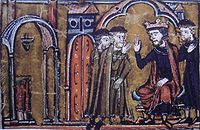
A medieval depiction of Hughes de Payens and Geoffrey de St Omer
meeting with Baldwin II in Jerusalem
Although initial numbers were small, in fact at the outset they numbered nine Knights in total, they had powerful allies who were suitably placed politically to effectively speak on their behalf such as St Bernard of Clairvaux, a leading churchman of his time and said to be nephew of one of the founding Knights.
At the Synod of Troyes, on 31 January, 1129, the Order was formally recognised by Papal endorsement and furnished with a Rule by St Bernard based upon that of the Benedictines. Instantaneously the Order became a favourite charity for pious royalty, noblemen and gentry throughout Europe who liberally endowed it with grants of lands and financial donations and the ranks swelled with their sons keen to support the fight in the Holy Land.
In 1139 a Papal Bull "Omne Datum Optimum,” exempted the Order from any obedience to all secular and church laws. This extended to the paying of taxes and their being restricted or hindered from passing through anyone’s border – with this, they had but one master on earth, the Pope, under whose jurisdiction they directly fell and had the effect of creating a single international fully autonomous entity which some have chosen to call a "Christian Empire.”
And from henceforth it shall not be permitted to any ecclesiastical or secular person to infringe or diminish the customs and observances of your religion and profession, as instituted by the Master and brethren in common ; and those rules which have been put into writing and observed by you for some time past, shall not be changed or altered except by the authority of the Master, with the consent of the majority of the QDO DE chapter.
No ecclesiastic or secular person shall dare to exact from the Master and Brethren of the Temple, oaths, guarantees, or any such securities as are ordinarily required from the laity.
And since those who are defenders of the church ought to be supported and maintained out of the good things of the church, we prohibit, all manner of men from exacting tithes from yon in respect of your moveables or immoveables, or any of the goods and possessions appertaining unto your venerable house;.
As the Order grew, so did its influence which became widespread and although their individual members were sworn to vows of poverty, it was given control of significant wealth over and above what it received in direct donations. Banking methods were established including a system of cheque and credit to further protect those en route to the Holy Land and by which they could deposit money with a Templar post in one country and draw from it with their letters of note at others along the way of their travels.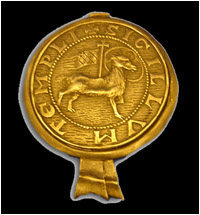
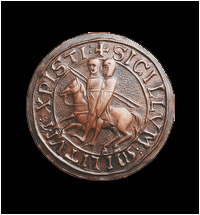
Two early seals of the Order. One depicting the Lamb of God,
the other two riders on one horse.
Despite military prowess, the Order and the associated Christian army were never able to vanquish that of their Muslim counterparts. Internal squabbling and fighting further weakened their overall condition and resultantly, with the defeat at the battle of the Horns of Hattin Jerusalem fell to Saladin’s forced in 1187 forcing the Order to relocate to their fortresses such as the important sea port of St. Jean d’ Acre in the north.
Constantly being beaten back over the next one hundreds years or so, after an eight week siege Acre fell in 1291 with all there being slaughtered by the soldiers of Al-Ashraf Sala h ad-hin. This was followed by their evacuation of their other mainland stronghold of Tortosa, in Syria, until they finally moved their headquarters to Limassol on the island of Cyprus. With the loss of Ruad and the massacre of the Templar garrison there in 1302 the Order lost its last foothold in the Holy Land.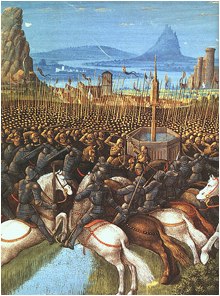
The Battle of the Horns of Hattin
The problems now faced by the Order were serious, for one thing their very reason for existence, the protection of pilgrims to the Holy Land, was gone and although they maintained their possessions and complex infrastructure within Europe, this was fast becoming a contentious subject especially with the major landholders who saw no reason for the Order to continue to not only own such large and wealthy tracts but be exempt from normal laws. There were also those who took a more selfish view on the troubles besetting the Templars, especially those who had benefited from substantial loans such as Philip IV, King of France, who had almost exhausted not only his own exchequer with his sustained war with England but had fallen deeply into debt with the Order as a consequence of his need for funding.
A great many rumours had abounded for some time about the practices of the Order undertaken in secret which told of strange rituals including the renouncing of Christ, the spitting on His image, of homosexual acts and other debauchery. It was also said that Jacques de Molay had taken it upon himself to have sufficient powers to grant absolution to those of the Order. To all of this Philip of France was not deaf, nor blind and in the fermentation of these rumours he seen a means to not only rid himself of his immense debt to the Order but to gain an opportunity to sieze its vast assets both in land and money within France. The result of this intrigue was that upon Philip’s order, Jacques de Molay and a considerable number of other Templars then in France were arrested on Friday 13th of October, 1307, and cast into prison.
The trial of the Knights Templar was a shocking display of violence and coercion and of bully-boy tactics to the extent of being nothing more than downright thuggery. Confessions of heresy and blasphemy were exacted under excruciating and barbarous methods of torture which were used by Philip to cajole the Pope into issuing the"Pastoralis Praeeminentiae” bill on 22 November, 1307, which instructed all Christian Monarchs throughout Europe to arrest those Templars in their lands and seize their assets.
In response Pope Clement issued the Bull "Regnans in coelis” on 12th of August, 1308, which called for the convening of the fifteenth ecumenical council of the Roman Catholic Church, at Vienne, southern France, with the intention of deliberating and deciding upon the Order’s fate and to which members of the Order were called. Once freed from their brutal captors and within the Papal judicial system many Knights retracted their confessions but Philip’s impatience and eagerness strove him to demand that their original confessions be regarded as true and in defiance at the dragging of heals by the Vatican he burned many dozens at the stake in Paris in 1310 then threatened military action against the Pope.
In February of 1312 envoys from Philip negotiated with the Pope without consulting the Council, and Philip held an assembly in Lyon to apply further pressure then he presented himself at Vienne in person on 20th March. At length Clement buckled under such unrelenting pressure and in what was termed to be an act for the maintenance of the general welfare of the Church he finally dissolved the Order by Apostolic ordinance with his Bull "Vox in excelso” on 22 March, 1312, which was approved by the Council on 3rd April following ;
In view of the suspicion, infamy, loud insinuations and other things which have been brought against the other... and also the secret and clandestine reception of the brother of this Order; in view, moreover, of the serious scandal which has arisen from these things, which it did not seem could be stopped while the Order remained in being, and the danger to faith and souls, and the many horrible things which have been done by the very many of the brothers of this Order, who have lapsed into the sin of wicked apostasy, the crime of detestable idolatry, and the execrable outrage of the Sodomites . . . it is not without bitterness and sadness of heart that we abolish the aforesaid Order of the Temple, and its constitution, habit and name, by an irrevocable and perpetually valid decree; and we subject it to perpetual prohibition with the approval of the Holy Council, strictly forbidding anyone to presume to enter the said Order in the future, or to receive or wear its habit, or to act as a Templar.
with the further Bulls "Licet dudum” being issued on 18 December, 1312, "Dudum in generali concilio” being issued on 31 December, 1312, and "Licet pridem” on 13th January, 1313. The cumulative result was the complete dissolution of the Order with its assets in the most part being made over the Hospitaller Order of St John thus leaving those of the Order in a desperate situation. Jacques de Molay, the elderly Grand Master, declared his innocence despite his previous confession under torture as did others, but he was declared a relapsed heretic and was burned at the stake in Paris on 18th March, 1314.
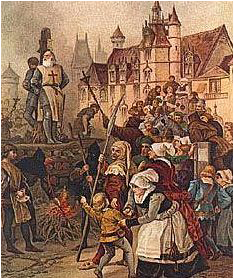
the burning of Jacques de Molay
The Order of the Temple
THE TRANSMISSION, THE RESTORATION AND "l'ORDRE DU TEMPLE"
"The Order of the Temple" emerged in France in the first years of the 19th century and claimed to be a secret continuation of the original Order which had gone underground upon its disolution in the 14th century.
Amongst those early members was Bernard-Raymond Fabre-Palaprat, a leading figure in the Masonic world, as well as a one-time Catholic Priest turned Chiropodist after the Revolution.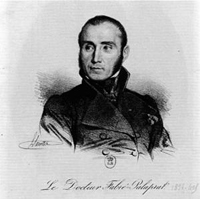
Palaprat and his Templar associates brought forward various items which had been maintained within the Order's archive throughout the centuries. These included the Statutes of 1705 said to be published by Philip, Duke of Orleans, the then Grand Master, and the "Charter of Transmission," better known as the "Larmenius Charter," which delineates a hidden descent of Grand Masters from Johannes Marcus Larmenius, to whom, it recites, the ill-fated Jacques de Molay conveyed his office of Grand Master in secret up to and including Fabre-Palaprat. Along with this particular document various other artefacts were mentioned in the 19th century revised Statutes but their whereabouts nowadays are unknown and, as such, cannot be graded and judged by experts for authenticity. 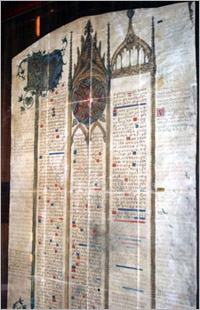

Left: The Larmenius Charter Right: The title page of the 1705 Statutes
The newly re-emerged Order expanded throughout the French empire and even obtained the approval of Napoleon Bonepart. A promising start, though, was quickly dashed and the Order became beset with internal strife as Fabre-Palaprat agreed intially to become Grand Master on 4th of November, 1804, for one year on account of their not being able to locate anyone of suitable note for the position only for him to continue in office and alter the Statutes in 1813 giving himself absolute power. Schism ensued and for a time there were two Grand Masters until the intervention of the Grand Prior of England, Sir William Sidney-Smith who managed to effect a reconciliation which allowed Fabre-Palaprat to remain in office. Despite this attempt at peace and cohesion Palaprat continued to be as contentious an individual as ever and his creation within the Order of a branch of his self-invented Johannite Church of the Primitive Christians, initiated another schism in 1833. With his health failing, his opposition led by Charles Antoine Gabriel, Duke of Choiseul, and Sir William Sidney-Smith, implemented "La Commission Executive du Convent-General" in 1837 which restored the Catholic tradition and reformed the Order back to its original purposes. Upon the death of Fabre-Palaprat in February of 1838 Sir William Sidney-Smith was chosen Regent and was later installed as Grand Master although this resulted in yet another fracture with those who were of the Palaprat persuasion. At length both factions continued but not even one hundred years lapsed until the main body was in disarray and all but defunct. 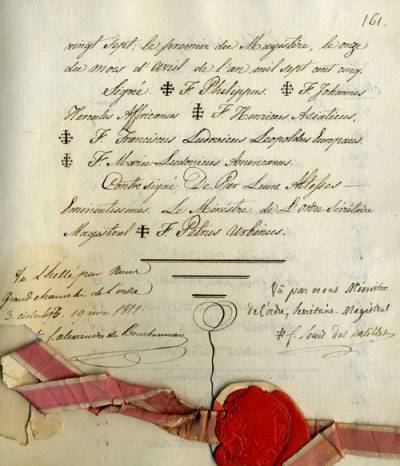
An original page from the Order's Statutes, signed by the senior officers
and sealed with the Great Seal.

The Grand Priory of Belgium had been created as a "tongue" of the Ordre du Temple in 1825 under the charge of Marquis Albert-Francois de Chasteller, and, similar to other units, had soon after split into pro-Catholic and masonic factions with the latter forming the Trinity of the Tower which survived until 1930 when it met for the final time in formal Conclave to dissolve itself.
Two years later, in January of 1932, eleven of the previous members of the Trinity of the Tower came together to form the "L'Ordre Souverain et Militaire du Temple de Jerusalem" or the "Sovereign Military Order of the Temple of Jerusalem" and to which they invited what remnants there were of their parent Order du Temple incuding the Grand Priories of Portugal, Italy and Switzerland. Thus the old Order was to a certain extent re-established and revitalised and immediately began to flourish firstly under the Regent Thoedore Covias and then Emile Isaac Vandenberg who succeeded as Regent on 8th August, 1935, and was afterwards elected Grand Master the following October 1st.
Unfortunately, progress was interupted by the outbreak of the second World War. It was well-known that Adolf Hitler and many of his fellow high-ranking Nazis shared a deep interest in matters esoteric and that they expended energy and finance in various attempts to track down knowledge and items of power to aid them in their work. Early on in the occuption of Belgium it became known that the Nazis were gathering information on the Order and it was agreed that to ensure the safe survival of the Order and its archives it would be passed for safe-keeping to the Grand Prior of Portugal, Antonio Campello Pinto de Sousa Fontes, for which a decree was executed by the Grand Master, Emile Isaac Vandenberg, on 23 December, 1942, with the task of transportation being given to Karel Holemans, a Belgian Painter. Upon the death of Vandenberg in a car accident near Brussells the following year, Antonio Fontes remained as Regent with the prerogatives of Grand Master until his death in February of 1960 when he was succeeded by his son Fernando, the current Grand Master, who received official endorsements from the senior officers of the Order in 1960 ;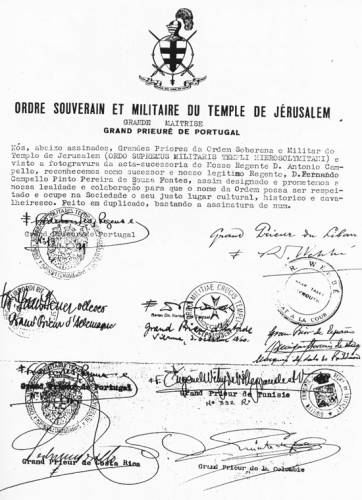
Since then the Order has continued its policy to grow internationally and now has several thousand members in over forty-two different countries. The past fifty or so years, however, have not been without their own problems and today there are several bodies wordlwide bearing the name of the Order in one form or another. There are also many others who claim to be part of this Order but who are rouge outfits usually with highly suspect motives and involve members who have been expelled for poor behaviour well beneath the standards expected. We urge all to be cautious and to only have dealings with those units who can produce competent paperwork which proves their connection to this legitimate Order.
THE COUNTY OF EDESSA
This was the first of the Crusader States to be founded in 1095, as the armies of the First Crusade emerged from Asia Minor to turn southwards towards the Holy Land. Established by Baldwin of Boulogne, later second King of Jerusalem, Edessa, now Urfa in the south-east of modern Turkey, was overrun by the Moslem Zangids in 1146 and this was the cause of the Second Crusade.
THE PRINCIPALITY OF ANTIOCH
Antioch, now in Turkey, was previously the centre of the Seleucid Empire and later the centre of eastern Roman power. It was the second of the Crusader States to be established in 1098 and was ruled by the Hauteville dynasty until its fall to the Egyptian Moslem Mamluks in 1268.
THE KINGDOM OF JERUSALEM
The establishment of the Kingdom of Jerusalem was the culmination of the First Crusade although its first Ruler Godfrey VI, Duke of Lower Lorraine (1088-1101), refused the title of King but instead was declared Advocate of the Holy Sepulchure of the Kingdom. The City of Jerusalem itself was not always in the hands of Kingdom and eventually the Kingdom passed to the King of Cyprus. The final outpost of the Kingdom of Jerusalem, the City of Acre, fell to the Moslems in 1291 effectively ending the mainland Crusader States and more or less the Crusades themselves.
Kings of Jerusalem
Godfrey of Bouilon - 1099
Baldwin I - 1110
Baldwin II - 1118
Fulk - 1131
Baldwin III - 1143
Amalric I - 1162
Baldwin IV - 1174
Baldwin V - 1185
Guy of Lusignan (King of Cyprus) 1186-1192
Conrad of Montferrat - 1190-1192
Henry I - 1192
Amalric II - 1197
Maria - 1205
John of Brienne - 1210
Frederick II of Germany - 1225
Conrad II - 1243
Conradin of Hohenstauffen - 1254
Hugh - 1284
John II - 1284
Henry II - 1285-1291
THE COUNTY OF TRIPOLI
During the First Crusade Raymond IV. of Toulouse established a County in what is now Lebanon and in 1109 the County captured the city of Tripoli which became the capital of the County. The Principality of Antioch fell heir to the County of Tripoli in 1187 and in 1289 the last remnants fell to the Moslem Mamluks of Egypt.
THE KINGDOM OF CYPRUS
During the Third Crusade of 1189, led by the Emperor Frderick Barbarossa, King Philip Augustus of France and King Richard, of England, the island of Cyprus was in the hands of a Byzantine rebel. King Richard captured the island and it came into Templar possession for a short period. Due to disputes within the Kingdom of Jerusalem Cyprus was bought back from the Templars and given to Guy of Lusignan as a Kingdom in 1192, in compensation for his giving up his claim to the throne of Jerusalem. The Lusignan dynasty ruled Cyprus until 1489 when it was taken over as a colony of the City/State of Venice which in turn lost it to the Osmanli Turks a century later.
GRAND MASTERS
GRAND MASTERS OF THE ORDER OF THE TEMPLE
circa 1118- 1314
Hugh de Payens (1118-1136)
Robert de Craon (1136-1146)
Everard des Barres (1146-1149)
Bernard de Tremelay (1149-1153)
André de Montbard (1153-1156)
Bertrand de Blanchefort (1156-1169)
Philippe de Milly (1169-1171)
Odo de St Amand (1171-1179)
Arnaud de Toroge (1179-1184)
Gérard de Ridefort (1185-1189)
Robert de Sablé (1191-1193)
Gilbert Horal (1193-1200)
Phillipe de Plessis (1201-1208)
Guillaume de Chartres (1209-1219)
Pedro de Montaigu (1219-1230)
Armand de Périgord (1232-1244)
Richard de Bures (1245-1247)
Guillaume de Sonnac (1247-1250)
Renaud de Vichiers (1250-1256)
Thomas Bérard (1256-1273)
Guillaume de Beaujeu (1273-1291)
Thibaud Gaudin (1291-1292)
Jacques de Molay (1292-1314)
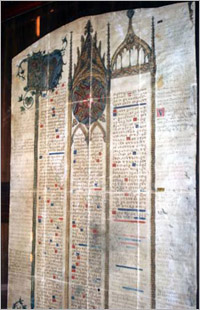
THE LARMENIUS CHARTER
The Larmenius Charter or the "Charter of Transmission" is a manuscript created by Johannes Marcus Larmenius in February, 1324 AD. The document is written in a devised ancient Knight Templar Codex the same codex used in ancient Templar documents involving the transfer of monies between Preceptories for traveling merchants.
In the document, Larmenius, then a very aged man in his 70's, states that the Grand Mastership of the Knights Templar Order was verbally transmitted to him ten years earlier (March, 1314) by the imprisoned Jacques DeMolay, the last Grand Master of the "First Phase" of the Knights Templar. (de Molay was burned at the stake by King Phillipe IV. on March 18, 1314, on the far west end of the Ile de la Cite. This island is in the middle of the Seine River in Paris, France, on which the Cathedral of Notre Dame is located, and separates the main part of the city with the Rive Gauchedistrict.) Larmenius was a Palestinian-born Christian who became a member of The Order of the Temple during the waning years of the Crusades. He was later the Templar Preceptor on the island domain of Cyprus after the Templar exodus from the mainland of the Holy Land to Cyprus after the fall of Acre in 1295. In this position, Larmenius was left in charge as Templar Seneschal (second highest rank in the Order) of the large remaining "exited" Templar forces in the Mediterranean in 1305 AD when DeMolay was tricked into coming to Paris for meetings with King Phillipe IV. and the "puppet Pope" Clement V of "Papal Captivity" fame at Avignon, France.
In the document, Larmenius states he has become too aged to continue with the rigorous requirements of the Office of Grand Master, and transfers his Grand Mastership of the Templar Order to Franciscus Theobaldus, the Prior of the Templar Priory still remaining at Alexandria, Egypt. With this declarative Charter, Larmenius protects the Order for perpetuity by continuing the legitimate line of Grand Masters of the Templar Order, which continues the "Second Phase" of the Order through the "Dark Period" through to its semi-private unveiling at the Convent General of the Order at Versailles in 1705 AD by Phillipe, Duke of Orleans, elected Grand Master of the Templar Order, and later also Regent of France.
The Charter was hidden during the French Revolution of 1792 (believed to have been in French Masonic circles), and resurfaced again in the Court of the Emperor Napoleon Bonaparte in 1804 by a Court doctor to Napoleon, Bernard-Raymond Fabré-Palaprat. The Charter carries a list of Grand Masters from Jacques de Molay, on through to Fabré-Palaprat.
1313-1324
John-Marc Larmenius
1324-1340
Thomas Theobald of Alexandria
1340-1349
Arnaud de Braque
1349-1357
Jean de Claremont
1357-1381
Bertrand du Guesclin
1381-1392
Bernard Arminiacus
1419-1451
Jean Arminiacus
1451-1472
Jean de Croy
1472-1478
Bernard Imbault
1478-1497
Robert Leononcourt
1497-1516
Galeatius de Salazar
1516-1544
Phillippe Chabot
1544-1574
Gaspard de Galtiaco Tavanensis
1574-1615
Henri de Montmorency
1615-1651
Charles de Valois
1651-1681
Jacques Ruxellius de Granceio
1681-1705
Jacques Henri Duc de Duras
1705-1724
Phillippe, Duc d'Orleans
1724-1737
Louis Augustus Bourbon
1737-1741
Louis Henri Bourbon Conde
1741-1776
Louis-Francois Boubon Conti
1776-1792
Louis-Hercule Timoleon, Duc de Cosse Brissac
1792-1804
Claude-Mathieu Radix de Chavillon
1804-1838
Bernard Raymond Fabre Palaprat
|
continuing down to HSH Dom Fernando de Sousa Fontes
1960-present

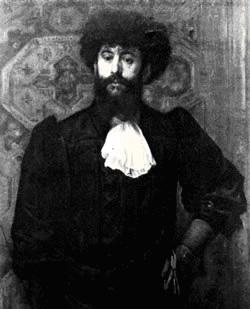
Joseph Peladan was born in 1858, in Paris, the tenth son of Louis-Adrien Peladan, a famous journalist, author and commentator on prophecies and philosophic-occult Catholicism.
In 1882 he settled in Paris where Arsene Houssaye employed him on his artistic review, L'Artist. In 1884 he published his first novel, Le Vice Supreme, which recommended the salvation of man through occult magick of the ancient east and was interwoven with Rosicrucian themes. As a consequence he and the poet De Guaita became acquainted and in that same years they decided to try to rebuild the Rosicrucian Brotherhood.
Among those Peladan and De Guaita recruited to help rebuild the brotherhood was Gerard Encausse, who went by the pseudonym "Papus,” a Spanish-born French physician and occultist who had written books on magic and the Tarot. In 1888, De Guaita founded the Cabalistic Order of the Rosicrucian and by the 1890, De Guaita, Papus, and Peladan’s collaboration became increasingly strained by disagreements over strategy and doctrines. De Guaita and Papus lost the support of Péladan, who left to start a competing order. In June 1890, Péladan left the Martinist Order and created a Catholic Order of the Rose and the Cross within which he took the titles of "Imperator" and "Super Magician".
In 1892 he served briefly as Regent of the Order of the Temple before the International Secretariat was elected at the Convent General held in Brussels on 13th November, 1894.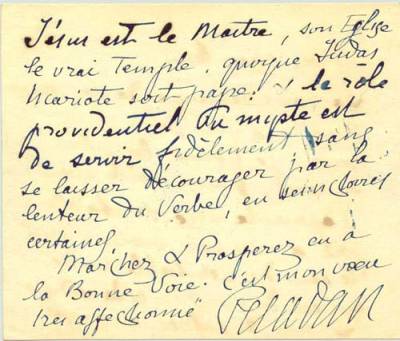
Joseph Peladan died in 1918.